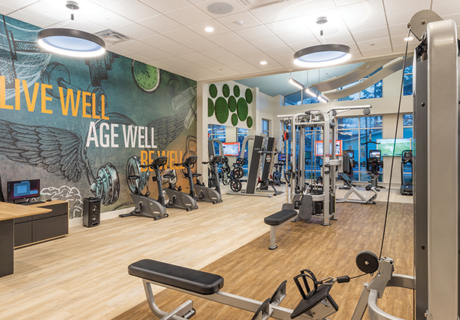Building A Sense Of Community In Senior Living
We often use the word “community” to describe the actual physical space in which senior residents live and engage. We sometimes forget that the true goal of a senior living community is to establish a sense of community.
Interior design strategies to foster community
Interior design can be used to help develop this sense of community, one that goes far beyond just the physical space. Design impacts the way humans interact with the space and those around them.
The the goal of designers in the senior living industry should be to not only create an attractive living space, but one that supports residents in living a fulfilling life.
How do we create designs that foster a sense of community? Think of public or private spaces that encourage social interaction in everyday life.
These are usually dining rooms and restaurants, gyms, hair salons, “man caves,” a family room, playgrounds, etc. These can be (and have been) re-created in a relevant way in senior living communities.
Amenity spaces to drive interactions
The Summit at Sunland Springs, an assisted living community in Mesa, Ariz., for example, has established Noah’s Place, a room full of toys, activities, and even a Wii gaming console to create a space where families with children can spend an enjoyable visit.
This creates a sense of community among residents who not only get to spend time with their own families but get to know each other’s families, like how parents and grandparents bond over watching their kids and grandchildren playing at a park.
Summit at Sunland Springs also features a spin on the “man cave” by offering The Garage, a space in which residents can relax in recliners while watching a game or TV show, use the communal table and workstations to work or tinker on model cars/airplanes, and store their in-progress projects in lockers for another day.
Imagine a group of residents discussing a time to meet to watch a game or work on projects together. Providing this type of space helps create the same opportunities for making connections that residents have become used to prior to moving into a senior living community.
Wellness spaces for seniors
Health and wellness offerings, such as gyms, pools, spas, or hair salons also offer places to meet new friends, get together with existing friends. Social outlets like common rooms and movie theaters have a similar affect.
Finally, feeling a sense of community doesn’t have to mean being engaged in similar activities or conversing with others. Just being around other people, albeit silently, can have a big impact.
Today, senior living communities are creating “tech rooms” where residents can read the paper, check their stocks, respond to emails, or work on computer skills.
Here, residents can feel the community around them and remove a sense of isolation, even if not engaging in conversation. Think of it similarly as to how we might spend time reading or working at a coffee shop instead of at home.
Futures trends in senior living design
As senior living communities begin to put a greater focus on building a sense of community, we expect to see these interior design concepts and others more commonly implemented. For example, budding trends include continued education opportunities with group online classes and volunteer opportunities outside the senior living community, allowing seniors to give back based on their own vast knowledge and life experiences.
Cynthia Warner is the co-founder and lead designer at Warner Design Associates in San Mateo, Calif. She can be reached at cynthia.warner@warnerdesign.net









